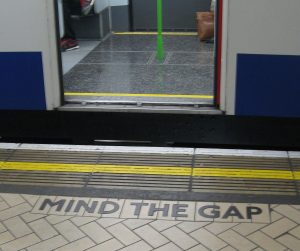“Tashi delek”! We have just entered the new year according to the Tibetan calendar, this year is the Year of the Water Tiger.
A good week to talk to you about meditation therefore. Last weekend was also the 10 year anniversary of starting out on my journey to become a meditation teacher. Not just a metaphorical journey, a literal one – 2012 involved six transatlantic trips to study and train with Buddhist teacher Ethan Nichtern at the Interdependence Project. It was a sensational year – one in which I turned myself inside out (in a good way), met so many wonderful people, and came to take New York city deep into my heart. NYC continues to be somewhat of a spiritual home for me.
The 14th and current Dali Lama once advised reflecting upon our progress on the path of meditation every 10 years or so – so this is an opportune time. Such a reflection has been on-going in the completion of my book. Meditation has changed my being, and with that my approach to doing therapy. More than ever, my practice as a psychotherapist is deeply informed by transpersonal models. My being, but also how I see human beings and the journey to wholeness and emotional, psychological, physical, and spiritual well-being.
This week, I’d like to share with you some ways in which I have changed thanks to the practice of meditation. Firstly though, it might help to give you some context of my practice. By the time I was travelling to NYC for training as a meditation instructor, I was regularly meditating for 20 to 30 minutes. My practice diet mainly consisted of shamatha, which means ‘calm-abiding’. Many of you will know this as mindfulness of the breath. Since then, the time spent sitting in a session has increased (I now practice for anything between 40 minutes and 2.5 hours), as has the frequency of my sitting (I have not missed a day of practice since February 2013, a commitment made post retreat with some of my NYC friends). Some days I practice twice a day. The type of practice has also both broadened and narrowed – each session has a specific intention, but over the course of a week I blend types of practice, indeed all three I mentioned a few weeks back: the focused attention practices of shamatha, the open monitoring practices of resting in awareness, and the non-dual practices of the Vajrayana path that I have been on for nearly 3 years. The Ngondro that all entrants to the Vajrayana path undertake also requires visualisation and compassion practices. I share all this not to show off (!) but to give you a sense of what has ‘gone in’ to the mind training bank account in order to see the returns below.
Slowing down

If you were to ask my friends and family what they have noticed in me over this past decade or so, I imagine they would offer feedback along the lines of experiencingme as ‘softer’. When I first started practicing, like others I saw how busy my mind was – in fact, as I share in my book, I thought I was ‘getting worse’ and thinking more! I came to realise this was a natural stage in taking up the practice. The more I brought attention to the stream of thinking, with time that stream slowed; and then with more time, gaps in between thoughts became visible. Becoming a more ‘innocent bystander’ to my thinking on the cushion translated to a reduction of reactivity off the cushion. I saw thoughts appear, a gap opened, and I could make choices to respond rather than ‘shoot from the hip’.
Seeing the storyline

With the mental activity slowing down and the reactivity lessening, attachment to my storylines started to loosen too. Following the breath, a neutral object upon which to place my attention, I could see how much the thinking was based on fantasy. Memories of past events or predictions of what was to come. I started to take on board what many meditation teachers explain: we are not our thoughts, and we certainly don’t have to believe everything we think. This was enough to help me wriggle off the hook once snared; and instead, come back to the experience underneath the thinking.
Taking in more of my experience
 Meeting the practices of “the Four Foundations” was a real point of progression for me, breaking down experience into bite sized chunks in any given moment. Mindfulness of body helped me recognised the physical sensations underneath the thinking; and mindfulness of feeling helped me identify how I was experiencing those sensations. Often I would come to see how much was going on in my body and how unpleasant the sensations were to me. My body came alive, which might sound absurd given I was an endurance athlete for many years – yet this was the first time I really knew my body: I had been numbed out below my head, and missing SO much important information about my life, and the root of my very busy mental landscape.
Meeting the practices of “the Four Foundations” was a real point of progression for me, breaking down experience into bite sized chunks in any given moment. Mindfulness of body helped me recognised the physical sensations underneath the thinking; and mindfulness of feeling helped me identify how I was experiencing those sensations. Often I would come to see how much was going on in my body and how unpleasant the sensations were to me. My body came alive, which might sound absurd given I was an endurance athlete for many years – yet this was the first time I really knew my body: I had been numbed out below my head, and missing SO much important information about my life, and the root of my very busy mental landscape.
Trusting experiencing
One of my realisations on the path is how constant a companion anxiety has been in my life. Until I meditated, I didn’t know this – I always considered myself as confident, organised, in control. Becoming more embodied, I encountered all the activity that had been playing out below the neck. In all honesty, I did wobble at the time this was coming into my awareness. “Is it possible to put this all back in the box…please?” So, I really understand why people give up the practice. But with good support: meditation mentors, friends on the path, being in therapy – I have found a way to trust and embrace this experience (as I shared last week). I often share with clients who also experience anxiety that we can liken it to the alarm getting stuck on: I now appreciate that my nervous system needs updating – but that doesn’t happen by ignoring it, or wanting rid of “it”*. It is only through this understanding that I can make more room for the little girl in me who is still scared, and become a more compassionate companion for her.
Less defined by my experience
 Acknowledging my internal experience has made me more vulnerable; but I believe it has also made me more accessible, kinder, gentler. I have more confidence that not only can I survive my experience, but whatever is playing out is not who I am. The Tibetan Buddhist teachings offer the analogy of the ocean and waves. The waves are simply an expression of the ocean, not what the ocean is. Meditation has helped me ground in the depth of that being, and to see the waves as temporary features always shifting and changing.
Acknowledging my internal experience has made me more vulnerable; but I believe it has also made me more accessible, kinder, gentler. I have more confidence that not only can I survive my experience, but whatever is playing out is not who I am. The Tibetan Buddhist teachings offer the analogy of the ocean and waves. The waves are simply an expression of the ocean, not what the ocean is. Meditation has helped me ground in the depth of that being, and to see the waves as temporary features always shifting and changing.
No need to change anything
The more I have shifted my allegiance from the contents of experience to that which is aware of the experience, I have been able to release the need to control my life (and others in it!). Riding the waves is being more open to the inherent uncertainty in life: the pandemic has been a BIG yardstick in my capacity to endure the unknown. Resting in the backdrop of awareness itself is easier when things in the external world are running smoothly; but this quality of being is here all the time – we just need to slow down and recognise it. From the perspective of unchanging awareness, we take life less seriously (or at least, not seeing the ups and downs as a personal failing). I thoroughly recommend Phillip Moffitt’s book “Dancing with Life“: it is a book I have read a few times now, most recently with friends in our meditation group at the start of the pandemic.
The path as a meditator and a Buddhist has changed me in innumerable ways; and I remain open to more change. You’ll notice I haven’t mentioned anything here about “becoming happier” or “more peaceful”. When I started out, I thought the path would reduce my suffering – it has, but not in the way I thought. Life still happens, I get hurt, sad, disappointed etc. Yet with less identification on those events in my awareness, I can untangle experiences from that which experiences. And as Chogyam Trungpa once said “that which knows your suffering is not suffering itself”.
 I am beginning to allow this to shape my psychotherapy practice more and more. Stillness and movement; the ocean and the waves. It remains incredibly important to meet the client where they are – which is often in the story of the suffering. Good psychotherapy is one in which the client can investigate and digest what has happened to them: to understand the story, to unravel it in the presence of a benevolent Other. As a Gestalt therapist, it is important that I provide the support through which a client can also experience the impact of the past in the present. As a transpersonal therapist, it is also helping the client notice what is aware of the experience. In some ways, this is appreciating that to knotted story is not who we are. Knowing the knot is helpful – as this helps us understand how we got tangled in the first place and lost contact with our being; but like the Gordian knot, the more we try to unpick it, the tighter it can become. Instead, drop back into the aware being itself – and the knot begins to lose its hold.
I am beginning to allow this to shape my psychotherapy practice more and more. Stillness and movement; the ocean and the waves. It remains incredibly important to meet the client where they are – which is often in the story of the suffering. Good psychotherapy is one in which the client can investigate and digest what has happened to them: to understand the story, to unravel it in the presence of a benevolent Other. As a Gestalt therapist, it is important that I provide the support through which a client can also experience the impact of the past in the present. As a transpersonal therapist, it is also helping the client notice what is aware of the experience. In some ways, this is appreciating that to knotted story is not who we are. Knowing the knot is helpful – as this helps us understand how we got tangled in the first place and lost contact with our being; but like the Gordian knot, the more we try to unpick it, the tighter it can become. Instead, drop back into the aware being itself – and the knot begins to lose its hold.
————————–
*As often the “it” is actually the part of us that is at the core of our wounding. Getting rid of “it” is to further abandon, reject, condemn the child again.

